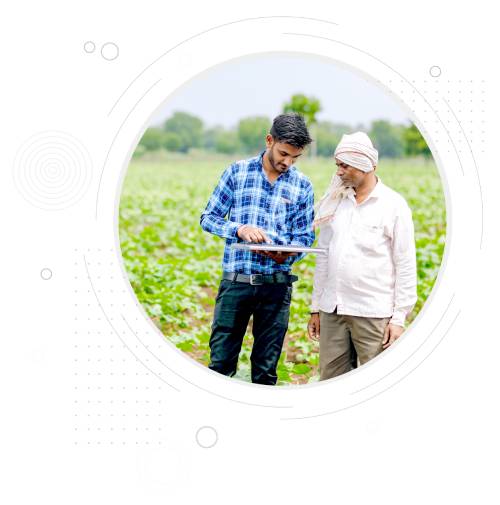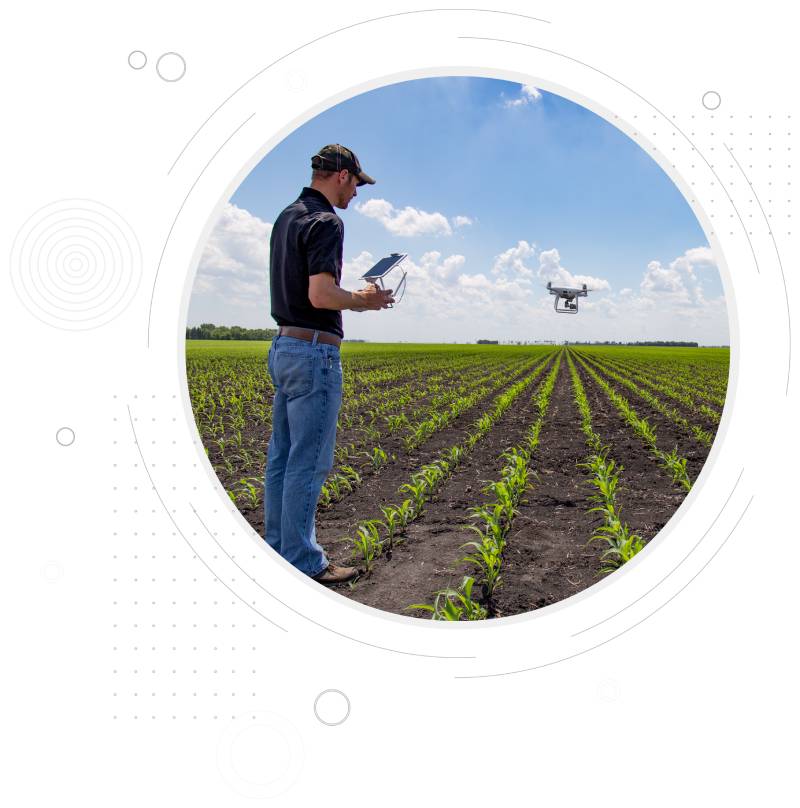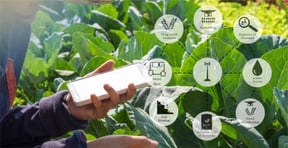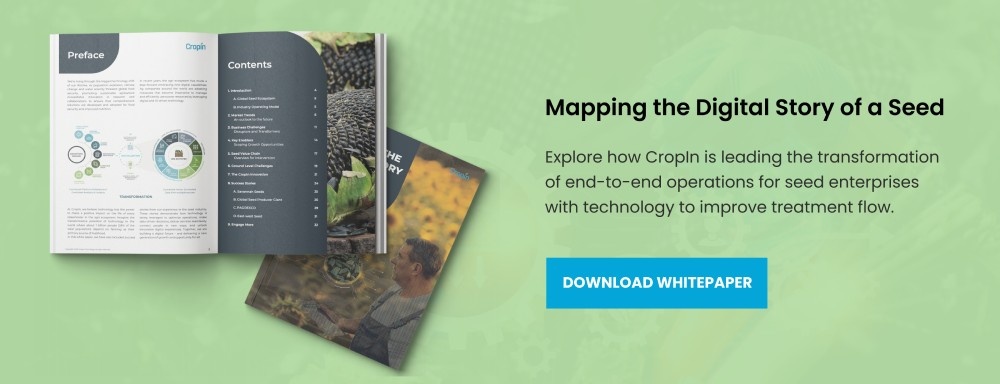The Relevance of ICT in Modern Agricultural Technology
Information and Communication Technologies (ICTs)
Information and communication technologies (ICTs) in agriculture technology comprise those networks, mobiles, devices, services, and applications that aid the processing, management, and exchange of data, information, or knowledge with a target audience. They include a broad range of converging technologies, including traditional telecommunications, television and video, radio, CD-ROMs, cell phones and smart devices, and several modern technologies such as computers and the internet, sensors, Geographic Information Systems, satellites, and the like. Essentially, the purpose of ICT is to transfer information from one point to another.
Impact of ICT on Agriculture and Information Technology
When talking about modern farming technology, one needs to acknowledge the role of ICT as a decision support system for farmers. Through the assistance of ICT, farmers are able to stay updated with all recent information. This is inclusive of data about weather, agriculture, and newer and more advanced ways of enhancing crop quality and production.
ICTs have largely revolutionized the way people, governments, and businesses, both large and small, function in the modern world. Close to 60% of the global population has access to the internet, and mobile internet is now the most widely-used channel for internet access worldwide. The tremendous adoption of ICTs has made it possible to facilitate better communication and ensure the delivery of services and information to people who previously lacked access.
The infusion of new, advanced agriculture technologies has allowed the global agriculture sector to surge ahead and transform the way producers cultivate, harvest, and distribute agricultural commodities. The use of technology in Indian agriculture, or e-agriculture, has accelerated agricultural and rural development by adopting innovative ways to improve the existing information and communication processes. It has particularly revolutionized smallholder agriculture in several agrarian economies and has helped address several challenges associated with the traditional form of agriculture.
Understanding Modern Technology Used in Agriculture
The agricultural scene today requires the integration of sophisticated technologies such as temperature and moisture sensors, robots, GPS technology, and aerial images, to name a few. On this note, ICT helps meet the elevated demand for newer approaches. Such digital farming tech also aids in empowering rural farmers by allowing better access to effective production strategies, banking and financial services, etc.

Empowering Smallholder Agriculture
In developing countries, ICT in agriculture provides farmers with vital information pertaining to sowing, crop protection, and improving soil fertility that enables them to improve agricultural productivity. Weather-related advisories and alerts help them prepare for sporadic events such as floods, drought, or even pest and disease outbreaks, thus preventing significant crop loss. ICTs also provide them with a reliable channel to seek the best market price in the local markets and other daily updates for their produce to ensure they receive fair returns.
The increasing penetration of budget-friendly mobile phones and the internet is an added advantage for farmers living in remote areas in several emerging nations. Access to inexpensive mobile devices has now made it easier for them to acquire additional information and services that enable informed decision-making.
Now, the use of the latest technology in agriculture in the world has ensured that with a touch of a few buttons, agriculturists can connect with the global network of farmers, agronomists, businesses, and other service providers to stay up-to-date on the latest crop cultivation practices.
For policymakers, the advantage of adopting ICT in agriculture is that information sharing enables them to gain a better understanding of the situation at the ground level, which will contribute to the designing and implementation of agrarian and rural development policies that benefit the farmers. The ICT’s extensive reach to even the remotest location can also help them address issues concerning gender bias, women empowerment, and other socioeconomic concerns.


APPLICATIONS OF ICT IN THE DEVELOPED WORLD
The use of ICT in modern agriculture technology has also significantly transformed agriculture and farming in developed countries at a different scale. Internet of Things (IoT), Cloud Computing, and Big Data have all had a profound impact on the efficiency of current processes. Several farm holdings manage farms remotely using sensing technologies, drones, and other devices that gather vital data on soil properties, air, crop health, and weather conditions.
The data enables farmers and agribusinesses to closely monitor crop cultivation, optimize the use of agrochemicals and natural resources, and adapt quickly to changing environmental conditions. The application of precision agriculture and ICTs have resulted in increased efficiency and reduced costs. It has also delivered decision-making tools that boost agricultural productivity and help manage natural resources effectively.
IoT, in particular, has several applications in agriculture, from real-time monitoring of soil, plant, and animal health using in-situ sensors to tracking the origin of a product or agri-commodity and its environmental impact, as well as its storage environments along the supply chain.
Estimates suggest that by 2030, IoT could potentially evolve into the ‘Internet of Action’ where sensors and machines, based on in-built AI and data analytics capacity, will also be capable of self-optimizing and initiating activities on their own, without much human intervention.
THE ROLE OF ICT: REVAMPING MODERN AGRICULTURAL TECHNOLOGY

ICT farming, particularly the use of multimedia technology and other innovative approaches to interactive knowledge transfer processes, is transforming agricultural extension services. ICT has been instrumental in empowering farmers through knowledge and building their capacity to incorporate various environment-friendly practices around regenerative agriculture in order to achieve rural and agricultural developmental goals. Some of thekey areas where ICT in agriculture plays a vital role are:
Regulatory policy and governance
The widespread adoption of digital technologies by agriculturists is resulting in an exponential increase in the availability of a wide range of big data that can aid better policy-making and monitoring, as well as help transform the agriculture sector.
Agricultural extension and advisory services
ICT in the form of innovative media platforms bridges the gap between farmers on one end and agricultural researchers and extension agents on the other. It is a more cost-efficient method to improve smallholders’ knowledge of current agricultural practices and markets.
Enhanced market access
ICT-enabled market information services enhance farmers’ access to nearby markets and their awareness of current consumer demands through the transfer of information from the traders. ICTs also foster networking among the agri-stakeholders, which facilitates increased market access for inputs and product marketing and trade.
Environmentally sustainable agriculture
Budget-friendly mobile phones, internet, and other services to disseminate information and provide rural farmers with improved access to solutions for climate-smart agriculture and the appropriate knowledge to use them.
Early warning system (EWS) for disaster management
ICTs provide actionable and real-time information to governments and communities on disaster prevention and management. They also increase the efficiency of responding efforts during emergency situations and drive more effective communication by providing the people with timely advice on risk mitigation procedures.
Food safety & traceability
A combination of simple and sophisticated technologies, such as mobile phones, software solutions, RFID tags, data input websites, and sensors using GPS technology, among others, enable producers to capture and monitor reliable data and also comply with international traceability and food
Financial inclusion and risk management
ICTs strengthen rural and smallholder farmers’ access to financial services, enable them to find affordable insurance schemes and tools to better manage risk, and empower them with information regarding financial services that are available to them.
Capacity building and empowerment
ICTs serve as vital education tools for the development of local communities. They broaden the reach of women, youth, and other beneficiaries and open the doors for newer business opportunities to enhance livelihoods and incomes.





